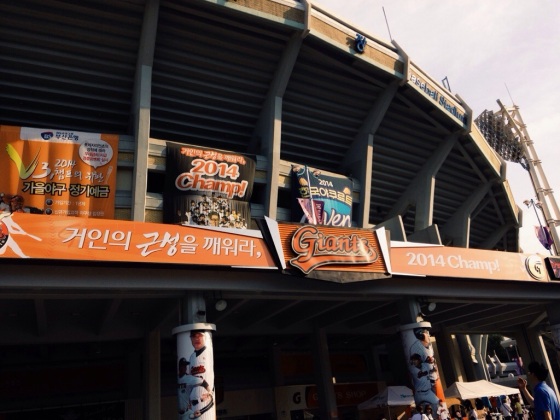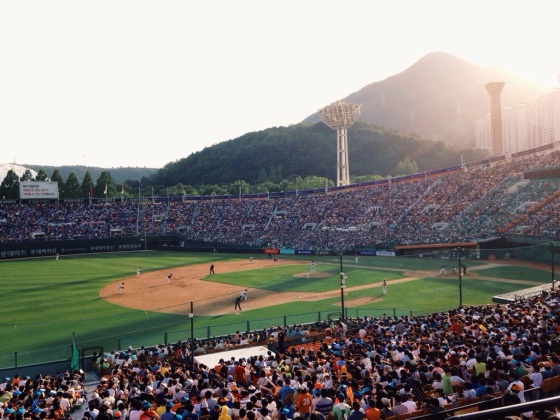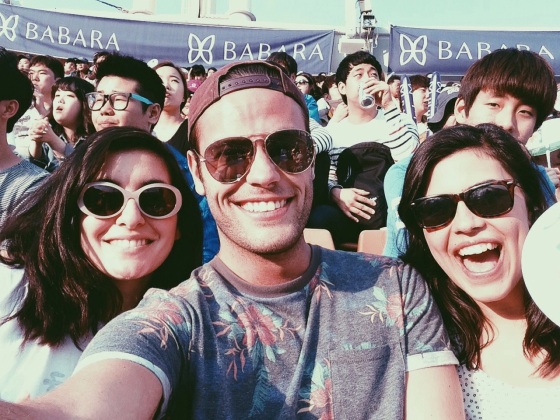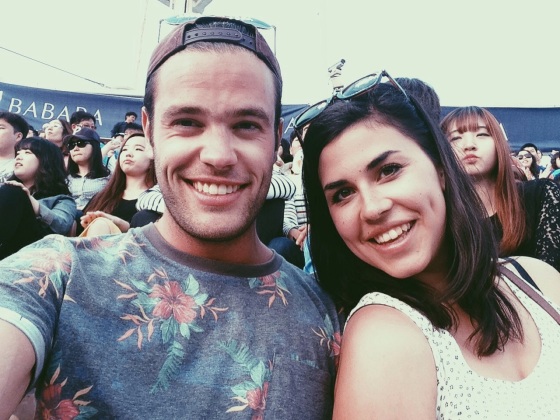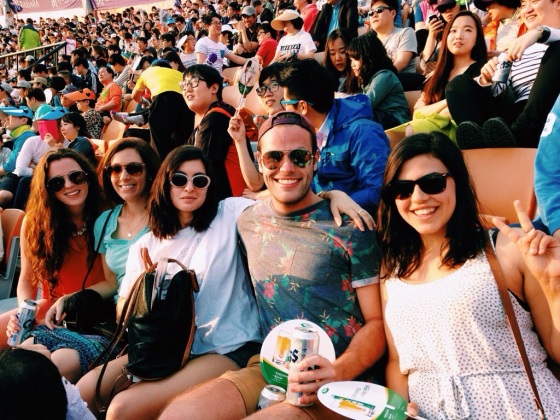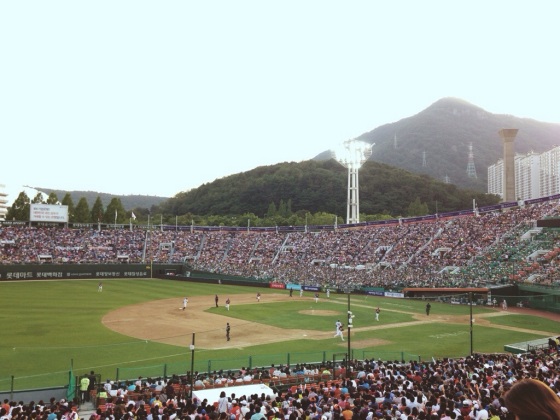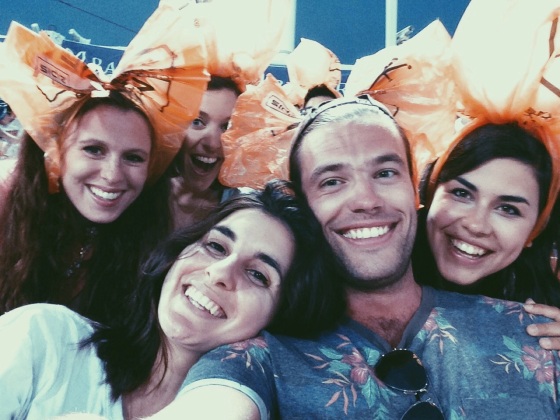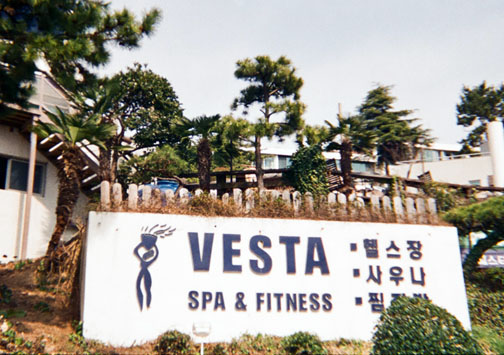This is a Busan Ex-Pat City Guide post. Check out the rest of my list here.
I can’t even begin to fathom how excited my father is going to be when he reads that me – little old bookish, bloggish me! – went to a baseball game. (LOL joking, my mom is the only one who reads this anyway). But, it really did happen and I really did love it.
Steph, Mary, Nina, Brandi and I headed to Sajik Stadium this past Saturday to watch Busan’s Lotte Giants take on Seoul’s Nexen Heroes. Baseball in Korea seems to be some sort of aphrodisiac, because Koreans and foreigners alike love it and go on and on about the joys of a Saturday afternoon game. Before they left Korea, Jess and Maddie insisted I go. My young elementary school boys constantly ask if “I know the famous player Kim Han-eol”, to which I always respond with a blank stare. Even my Korean co-teachers who, to me, would seem completely disinterested in baseball, rave about games. It is serious business here.
We arrived too late to purchase a ticket to the sold out event, but luckily, Steph and Brandi managed to find a(n adorable ajumma) scalper selling them for ₩20,000. We entered the stadium, and were greeted by (somewhat) deafening cheers from a stadium packed with baseball enthusiasts.
Admittedly, none of us knew anything about baseball, and for the longest time, we thought it was the Giants who were slaughtering the Heroes. Thankfully we had Brandi, our very own little baseball savant, to help explain the series of confusing numbers, letters, dots, and jargon associated with the scoreboard and baseball, generally (and to also inform us that the Giants were the ones being slaughtered). I can honestly own up to zoning out for much of Brandi’s explanation, by no fault of hers. My brain is simply not wired to care about baseball beyond the very superficial “wow, I’m in a sports stadium!” level.
That said, I really enjoyed the Korean baseball experience. The Nexen Heroes did unfortunately destroy the Giants (the final score was 14-2), but there was too many typically/adorably Korean things happening to be fazed by the loss. The derpy little bat girl with her pumping knees and giggle as she ran to grab bats off the field. The chants of “ajooooooraaaah!” (roughly translated, this means “give it to a kid!”) when a ball would fly into the crowds. Orange plastic bags intended for garbage tied into a bow and placed upon spectators’ heads. 7/11 convenient stores all over the stadium, selling tall boys of my favourite Korean beer, Cass, for $2.70CAD. Groups of Korean teenagers sitting and nomming on entire boxes of pizza, fried chicken, and Korean BBQ, cheering between chewing. The entire thing was such a spirited occasion and really showed me that South Korea is on their baseball grind.
Overall, my evening at Sajik Stadium was all brews and balls with my biddies, which is just how I like it. This was another Bucket List favourite for me, and I would highly recommend it to tourists and expats alike. A night of Korean baseball will feel almost like home, but with a Korean twist. That’s why you’re here anyway, right?
Directions
To get to Sajik Stadium, take the Brown Line on the Busan Subway (Line 3) to Sajik Station (stop 308). Take exit 1 and walk straight out for two blocks, before turning right. Continue straight down this road and the stadium will be on your left (you honestly can’t miss it). Entrance to Sajik Stadium for a Lotte Giants game approximately is ₩7,000. More pricing details can be found here.

